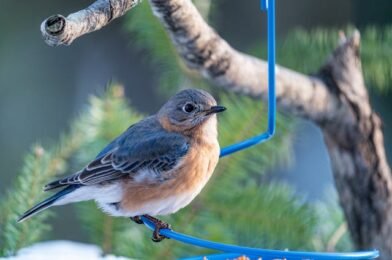Welcome to the colder months, where the days are shorter, and the weather is chillier. As the winter season approaches, many of us start preparing our homes to be cozy sanctuaries. But what about our feathered friends? Birds need our help to survive the harsh winter conditions. Creating a winter oasis in your backyard or balcony can be a rewarding experience and an excellent way to support local bird populations. Here’s how you can make your outdoor space a welcoming haven for birds during the colder months.
**Provide a Reliable Food Source:**
During winter, birds exert extra energy to maintain body heat, and finding food becomes more challenging. Setting up bird feeders is an excellent way to support them. Offer a variety of seeds, such as sunflower, safflower, and nyjer seeds, to attract different species. Keep feeders stocked and clean to ensure a safe and reliable food source. Consider adding suet cakes, which are high in fat and calories, providing birds with the energy they need to stay warm. You can even make your own suet mixtures at home with lard, peanut butter, and birdseeds.
**Offer Fresh Water:**
Water sources can be scarce in winter, freezing over or becoming buried under snow. Birds need water for drinking and bathing, so providing a clean water source is essential. Invest in a heated bird bath or use a simple heating element to keep the water from freezing. Place the water source in a safe, open area, making it easily accessible to birds while also providing a clear view of any approaching predators.
**Create Natural Shelter:**
Birds need protection from the elements and predators. Plant evergreen trees and shrubs, such as holly, juniper, and spruce, which provide excellent cover and may also offer natural food sources with their berries and seeds. If you have space, consider building or installing bird roost boxes, which offer a safe and warm place for birds to rest during the cold nights.
**Add Some Color and Comfort:**
Attracting birds to your winter oasis is not just about their survival; it’s also about the joy these colorful visitors bring. Add colorful winter-flowering plants like winter jasmine or Christmas rose to your garden. These plants provide nectar for birds and brighten up your winter landscape. Additionally, scatter a few pinecones coated in peanut butter and birdseed around your garden to create visually appealing and tasty treats for your feathered guests.
Creating a welcoming environment for birds during winter is an easy and rewarding way to connect with nature. With a few simple steps, your outdoor space can become a vital resource for birds, making a real difference in their survival during the colder months.










